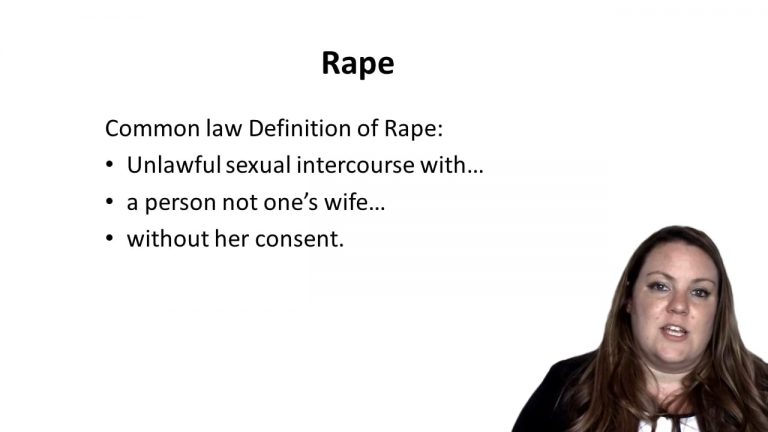SmartBrief
Confirm favorite deletion?
Criminal Law Keyed to Lee
State v. Alston
Citation:
310 N.C. 399, 312 S.E.2d 470 (1984)Facts
The defendant and Cottie Brown had been involved in a consensual sexual relationship for approximately six months. During this time, they had two conflicts in which Brown would leave the apartment she shared with the defendant. She testified that she would return to the defendant when he called to tell her to return. She also testified that although she sometimes enjoyed their consensual sexual relations, she often had sex with him just to accommodate him. On those occasions, she would stand still and remain entirely passive while the defendant undressed her and had sexual intercourse with her.
Brown testified that at times, their consensual sexual relations involved violence. The defendant had struck her several times throughout the relationships when she refused to give him money or do what he wanted.
On May 15, 1981, after the defendant struck her, Brown left the apartment and moved in with her mother. She did not have intercourse with him after May 15 until the alleged rape on June 15. She testified that she did not break off their relationship because she was afraid that he would get angry.
On June 15, 1891, Brown went to school to find the defendant standing close to the door. He blocked her path as she walked to the door and asked her where she had moved. Brown refused to tell him ,and the defendant grabbed her arm, saying that she was going with him. Brown testified that it would have taken some effort to pull away. Brown told the defendant that she would walk if he let her go, so he released her. She testified that she did not run away because she was afraid of him. There were other students near by.
Brown told the defendant that she wanted to go to class, and he said that she was going to miss class that day. The two walked to a friend’s house. Brown did not ask for assistance from the people she passed nor did she attempt to get away.
At the house, the friend was inside. They chatted with the friend for a little bit. When the friend left, the defendant asked Brown if she was ready. The evidence tended to show that she told him “no, that I wasn’t going to bed with him” She testified that she did not want to have sex with the defendant and did not consent to do so at any time. The defendant told her to lay down, pushed her legs apart, and had sexual intercourse with her. Brown testified that she did not try to push him away. She cried during the intercourse.
The defendant was charged with second degree rape. At trial, the defendant put on no evidence and moved at the close of the State’s evidence for a dismissal of the charges. The trial denied the motions and so did the Court of Appeals.
Only StudyBuddy Pro offers the complete Case Brief Anatomy*
Access the most important case brief elements for optimal case understanding.
*Case Brief Anatomy includes: Brief Prologue, Complete Case Brief, Brief Epilogue
- The Brief Prologue provides necessary case brief introductory information and includes:
Topic:
Identifies the topic of law and where this case fits within your course outline.Parties:
Identifies the cast of characters involved in the case.Procedural Posture & History:
Shares the case history with how lower courts have ruled on the matter.Case Key Terms, Acts, Doctrines, etc.:
A case specific Legal Term Dictionary.Case Doctrines, Acts, Statutes, Amendments and Treatises:
Identifies and Defines Legal Authority used in this case.
- The Case Brief is the complete case summarized and authored in the traditional Law School I.R.A.C. format. The Pro case brief includes:
Brief Facts:
A Synopsis of the Facts of the case.Rule of Law:
Identifies the Legal Principle the Court used in deciding the case.Facts:
What are the factual circumstances that gave rise to the civil or criminal case? What is the relationship of the Parties that are involved in the case.Issue(s):
Lists the Questions of Law that are raised by the Facts of the case.Holding:
Shares the Court's answer to the legal questions raised in the issue.Concurring / Dissenting Opinions:
Includes valuable concurring or dissenting opinions and their key points.Reasoning and Analysis:
Identifies the chain of argument(s) which led the judges to rule as they did.
- The Brief Prologue closes the case brief with important forward-looking discussion and includes:
Policy:
Identifies the Policy if any that has been established by the case.Court Direction:
Shares where the Court went from here for this case.
Topic Resources
Topic Outline

 3m 19s
3m 19s